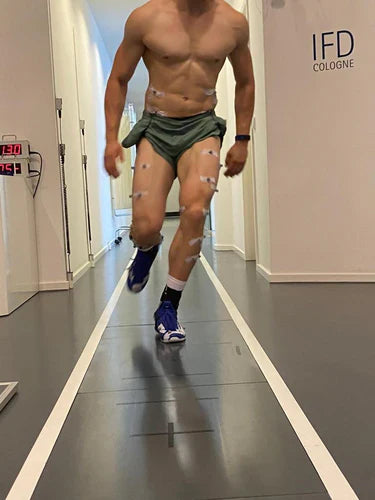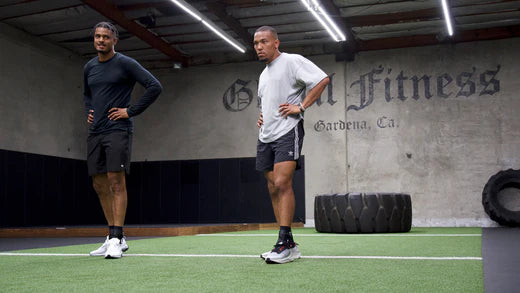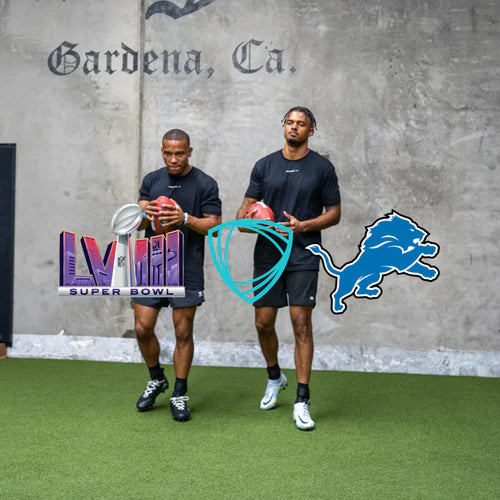As part of a study led by Steffen Willwacher, Professor of Biomechanics and Fundamentals of Engineering Sciences at the University of Offenburg, the best ankle brace for sports has now been established. A total of 20 male team athletes took part in the study. A total of three different sports bandages for the ankle were put to the test. In addition to the conventional passive orthoses Basko ASO and Active Ankle T2, Professor Willwacher's team also tested our ankle orthosis - developed with the innovative BG PROTECTION system. In contrast to the two passive braces, The BetterGuard is based on adaptive, i.e. adaptable basic principles.

Ankle injuries in sports are among the most common injuries
Twisting your ankle during a jump shot, a misstep during a defensive action or violent physical contact: ankle injuries are among the most common in sports. There are many reasons for this, but the problems that arise as a result are similar. Typical signs of an ankle injury are severe pain accompanied by clearly visible swelling, depending on the severity of the injury.
There are also problems with walking. In the majority of cases, this type of injury primarily affects the outer ligaments of the foot. Current studies show that around 20 percent of all sports injuries treated or requiring treatment are ankle injuries in the form of a lateral ligament rupture. This form of injury occurs most frequently in handball and other court sports.

Study background - what is the best ankle brace for sport in the test
But not all ankle orthoses are the same. The individual models have a historical development behind them and sometimes have significant differences - both in terms of technology and effect. Basically, the success of sports bandages for the ankle always depends on the effect of the protective function and consistent use in competition and training. A high level of comfort, sufficient freedom of movement and the minimization of performance losses due to the injury and wearing a sports bandage on the ankle are important for productive user compliance.
So far, only passive and stiffening ankle orthoses were available for ankle injuries. With the development of the BG PROTECTION system by Betterguards, you can now opt for an adaptive, speed-dependent protective ankle orthosis. But what is the real benefit of this new variant in practical use? How does it fare in comparison to the long-established, conventional orthoses? The study under the direction of Professor Willwacher provides answers.
The study on ankle orthoses - methodology
The sports bandage ankle test and the knowledge gained from it will help you find the best ankle bandage for your needs. The study, in the form of a comprehensive product comparison, was based on the following methodology:
- One adaptive and two passive legacy orthoses were compared; Reference: no orthosis.
- Checking the protective effect within a natural range of motion on the tilting platform.
- Verification of the protective effect using an artificial ankle model (simulates high-risk ranges of movement and twisting speeds).
- Checking of the athletic performance with a bandage in the form of detailed movement analyzes (examples: evaluating the height of a counter-movement jump, acceleration when starting, etc.).
- Verification of range of motion (determined manually by foot circles in a seated position).
- Testing of subjective stability and wearing comfort (evaluation by test subjects via questionnaire).

Result and conclusion: Several advantages clearly speak for the adaptive variant
The study results clearly show that our adaptive BG PROTECTION system performs significantly better than passive ankle orthoses in some areas. Accordingly, it allowed far more freedom of movement with actively controlled movements and was perceived as less restrictive and more comfortable. Particularly interesting for jump-intensive sports: when jumping, performance losses could be completely avoided.
The head of the study, Professor Willwacher, was also impressed. "In the context of the study, Betterguards convinced as an innovative solution for injury prevention. The adaptive ankle orthosis combines adaptive protection with very good freedom of movement and a high level of comfort," summarizes the internationally award-winning professor.
For you, this means: Betterguards now offers you a high-tech product that combines protection and freedom of movement. These are the necessary ingredients for building the best ankle brace for sports. With conventional and legacy ankle orthoses, you were forced to choose between these two properties.




